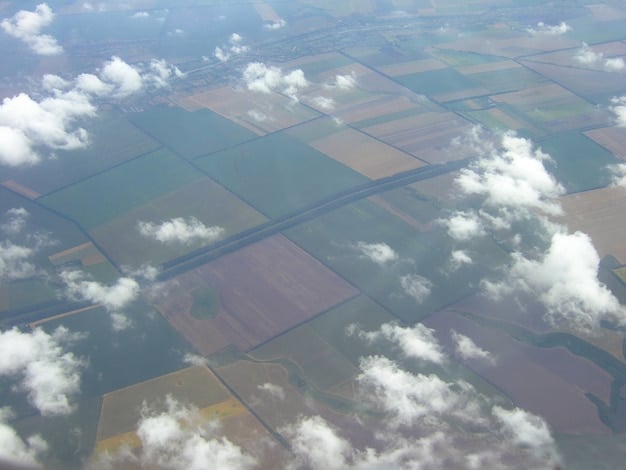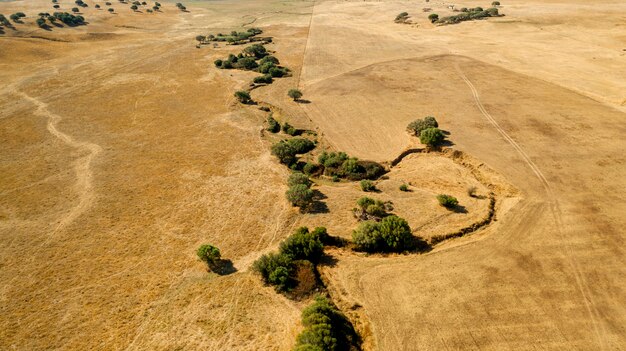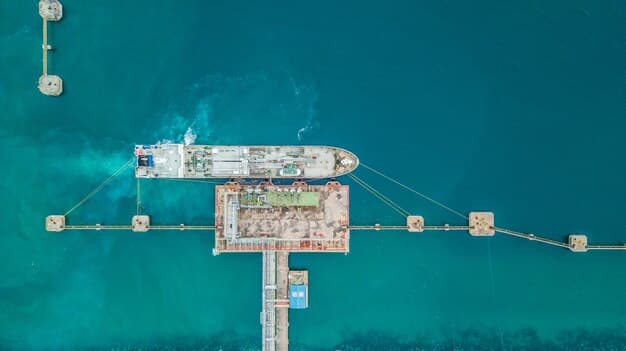Global Food Crisis & US National Security: A Deep Dive

The current global food crisis profoundly impacts US national security interests by exacerbating geopolitical instability, fueling mass migration, and creating economic vulnerabilities, demanding a multifaceted and proactive strategic response.
The intricate web of global interconnectedness means that challenges in one region can quickly ripple across the world, touching even the most powerful nations. When it comes to the stability of nations and the well-being of populations, few issues are as fundamental as access to adequate food. Therefore, **understanding the impact of the current global food crisis on US national security interests** is not merely an academic exercise but a critical imperative for policymakers and citizens alike.
The Intertwined Nature of Food, Security, and Geopolitics
Food security, defined as access by all people at all times to enough food for an active, healthy life, is a cornerstone of national stability. When this security falters on a global scale, the repercussions extend far beyond humanitarian concerns, directly impinging upon geopolitical dynamics and national security. The current crisis, driven by a confluence of factors, reveals the profound fragility of global food systems.
Historically, food has been a tool of both diplomacy and warfare. Nations with abundant food resources wield significant leverage, while those facing shortages become susceptible to external pressures and internal unrest. The current era provides stark reminders of this reality, where food scarcity amplifies existing tensions and creates new flashpoints.
Historical Precedent: Food as a Catalyst for Conflict
Examining past events elucidates how disruptions in food supply have consistently contributed to societal breakdown and international conflict. From the French Revolution, partly fueled by bread shortages, to the Arab Spring uprisings, where rising food prices played a significant role, the link is undeniable. These historical patterns offer vital lessons for contemplating the present crisis.
- French Revolution (late 18th century): Poor harvests and high bread prices exacerbated social unrest and resentment among the populace, acting as a major trigger for the revolutionary upheaval.
- Arab Spring (early 21st century): Soaring global food prices, particularly for staples like wheat, contributed significantly to the widespread dissatisfaction and protests across North Africa and the Middle East.
- Irish Potato Famine (1845-1849): While not directly a conflict catalyst, it demonstrated the devastating societal and demographic impact of a major food system collapse, leading to mass emigration and enduring geopolitical shifts.
Moreover, food insecurity can be weaponized, used as a means of control or as a coercive measure in international relations. Blockades and sanctions that restrict food flow, though often framed as economic tools, invariably have a humanitarian dimension with strategic implications.
The current global food crisis is not a singular event but a complex phenomenon shaped by interacting variables. Understanding these drivers is essential to forecast its trajectory and formulate effective responses. Climate change, geopolitical conflicts, and economic vulnerabilities collectively weaken the foundations of global food supply chains, making them susceptible to shocks.
Drivers of the Current Global Food Crisis
The current state of global food insecurity is the culmination of several interconnected and multiplying stressors. Identifying these primary drivers is crucial for understanding the multidimensional challenge facing the United States and the international community. No single factor is exclusively responsible; rather, it is their synergistic effect that generates such a profound impact.
The COVID-19 pandemic severely disrupted supply chains worldwide, affecting everything from fertilizer production to the availability of agricultural labor. Just as the global economy struggled to recover, the conflict in Ukraine erupted, delivering a massive blow to two of the world’s breadbaskets. Russia and Ukraine together account for a significant portion of global wheat, barley, maize, and sunflower oil exports, critically impacting nations dependent on these staples.
Climate Change: A Persistent Threat Multiplier
Beyond immediate events, climate change represents a long-term, systemic threat to global food production. Extreme weather events—droughts, floods, heatwaves, and erratic precipitation—are becoming more frequent and intense, directly undermining agricultural yields and increasing humanitarian needs. This environmental instability disproportionately affects vulnerable regions, exacerbating existing food deficits and driving displacement.
- Increased frequency of droughts: Leading to water scarcity for irrigation and reduced crop yields, particularly in arid and semi-arid regions.
- More intense floods: Destroying crops, livestock, and agricultural infrastructure, disrupting planting and harvesting cycles.
- Shifting growing seasons: Disrupting traditional agricultural practices and requiring adaptation that many smallholder farmers cannot afford.
Economic downturns and inflation also play a significant role. Rising energy prices increase the cost of food production, transport, and processing. Furthermore, global inflation reduces the purchasing power of consumers, particularly in low-income countries, making even available food unaffordable for many. Protectionist trade policies, while sometimes enacted with good intentions to ensure domestic supply, can exacerbate global shortages by restricting international market flows.
The interplay of these factors creates a precarious balance, where a single shock can trigger cascading failures across the global food system. This fragility presents significant risks to US national security by fostering environments ripe for instability and conflict.
Direct and Indirect Impacts on US National Security
The global food crisis does not merely exist “over there”; its tentacles reach directly and indirectly into the core of US national security concerns. These impacts manifest across various domains, including geopolitical stability, economic resilience, and domestic social cohesion. Ignoring the far-reaching consequences of widespread food insecurity would be a profound strategic miscalculation.
One of the most immediate and visible impacts is the exacerbation of geopolitical instability. Food scarcity fuels social unrest, political grievances, and competition over diminishing resources, particularly in fragile states. Such instability can devolve into civil conflict or regional wars, creating power vacuums ripe for extremist groups or rival great powers to exploit. This ripple effect directly threatens US interests by undermining international order, complicating diplomatic efforts, and potentially requiring costly interventions.

Migration and Humanitarian Crises
Food insecurity is a primary driver of forced migration. Populations facing starvation or conflict related to food shortages are compelled to seek refuge elsewhere, often crossing international borders. This leads to large-scale humanitarian crises, placing immense strain on receiving countries and international aid organizations, including those supported by the US. The resultant mass movements can destabilize neighboring regions, generate domestic political pressures in destination countries, and create new security challenges related to border management and resource allocation.
Economically, the crisis poses multiple threats. Increased food prices globally contribute to inflationary pressures within the US, affecting consumer purchasing power and potentially slowing economic growth. Disruptions in international trade due to food export restrictions or supply chain bottlenecks can harm US agricultural exports and related industries, impacting a key sector of the American economy. Moreover, the need for humanitarian assistance to address widespread starvation drains resources that could otherwise be allocated to domestic priorities or other national security objectives.
The interconnectedness of global markets means that food crises abroad can lead to higher import costs for certain goods or pressure on international aid budgets, which the US heavily contributes to. This diversion of resources can slow economic recovery and impact domestic spending, creating a feedback loop where global problems exacerbate internal stresses.
Strategic Implications for US Foreign Policy
Given the pervasive impacts of the global food crisis, it is clear that US foreign policy must adapt to this evolving threat landscape. A comprehensive strategy is required, moving beyond traditional aid models to embrace a more proactive, integrated approach that leverages diplomatic, economic, and security tools. Merely reacting to crises is insufficient; anticipation and prevention must become central tenets.
Diplomatic engagement is paramount. The US can use its diplomatic leverage to foster international cooperation on food security, advocate for open trade policies, and mediate conflicts that disrupt agricultural production or supply routes. Working with international bodies like the UN Food and Agriculture Organization (FAO) and the World Food Programme (WFP) strengthens global response mechanisms and helps coordinate efforts more effectively. Encouraging sustainable agricultural practices and climate resilience on a global scale through multilateral initiatives also falls within this diplomatic remit.
Investing in Resilient Food Systems Abroad
Long-term investments in agricultural development and resilient food systems in vulnerable regions are critical. This involves promoting sustainable farming techniques, improving infrastructure for storage and transport, and supporting local markets. By building capacity in these areas, the US can help countries become more self-sufficient and less susceptible to external shocks, thereby reducing the likelihood of future food-related crises that destabilize regions of strategic interest.
- Support for crop diversification: Reducing reliance on single staple crops to mitigate risks from climate shocks or disease.
- Investment in water management: Implementing efficient irrigation systems and promoting water conservation techniques.
- Strengthening local supply chains: Reducing dependence on complex international logistics, making food access more reliable.
From a security perspective, understanding how food insecurity intersects with radicalization, conflict, and migration is vital for intelligence gathering and strategic planning. The US military and intelligence communities must integrate food crisis scenarios into their analyses of global flashpoints. This understanding can inform targeted security assistance programs, pre-empting conflicts before they fully erupt, and supporting stabilization efforts in post-conflict zones.
Furthermore, humanitarian aid must be seen not just as a moral imperative but as a strategic tool for stabilization. Prompt and effective humanitarian responses can alleviate suffering, mitigate large-scale displacement, and prevent the collapse of governance structures in affected regions, thereby serving broader US security interests.
Domestic Preparedness and Resilience
While the global food crisis primarily manifests abroad, its repercussions can undeniably extend to the US homeland. Therefore, domestic preparedness and resilience measures are crucial complements to foreign policy initiatives. Ensuring the robustness of America’s own food supply chain and maintaining public trust are vital components of national security in an increasingly volatile world.
Strengthening domestic agricultural production and supply chains means identifying potential vulnerabilities and building redundancies. This includes investing in research and development for climate-resilient crops, improving infrastructure for food processing and distribution, and supporting American farmers. Diversifying import sources, where necessary, can also mitigate risks associated with over-reliance on a single region or country for specific food items.

Cybersecurity and Critical Infrastructure Protection
The modern food system is heavily reliant on technology, from precision agriculture to computerized logistics. Protecting this critical infrastructure from cyberattacks is paramount. A successful cyberattack on agricultural processing plants, transportation networks, or food safety systems could have devastating consequences, ranging from widespread contamination to significant supply disruptions. Robust cybersecurity measures are therefore a national security imperative for the food sector.
Public awareness and education also play a role. An informed populace is better equipped to understand the complexities of global food security and appreciate the importance of resilient domestic systems. This can foster support for policies aimed at strengthening the food supply chain and contribute to social cohesion during times of potential disruption. Moreover, encouraging sustainable consumption patterns and reducing food waste contribute to overall resource efficiency.
Finally, emergency response planning for food-related disruptions must be integrated into broader national contingency plans. This involves coordination between federal, state, and local agencies, as well as collaboration with the private sector, to ensure efficient distribution of resources and essential services in times of crisis. Such preparedness ensures that the US can navigate global challenges with minimal domestic impact.
Innovation and Future-Proofing Global Food Systems
Addressing the current global food crisis and preventing future ones requires a forward-looking approach rooted in innovation. Traditional agricultural methods often struggle to cope with the rapid pace of climate change and growing populations. Investing in and promoting next-generation technologies and sustainable practices are essential to future-proof global food systems, securing both livelihoods and national interests.
Precision agriculture, utilizing data analytics, IoT sensors, and artificial intelligence, can optimize resource use, improve yields, and reduce environmental impact. Techniques like vertical farming and controlled environment agriculture offer the potential to grow food in urban areas or challenging climates, reducing reliance on vast land areas and traditional weather patterns. Gene editing technologies hold promise for developing climate-resilient and more nutritious crop varieties, accelerating adaptation to changing environmental conditions.
Role of Biotechnology and Agritech
Biotechnology offers avenues for developing crops that are more resistant to pests, diseases, and extreme weather, directly addressing some of the key vulnerabilities exposed by the current crisis. Agritech startups are developing solutions across the entire food value chain, from advanced soil mapping to automated harvesting, all contributing to greater efficiency and resilience. Encouraging research and development in these areas, both domestically and internationally, will be crucial.
- Hydroponics and Aeroponics: Growing plants without soil, using nutrient-rich water or mist, allowing for cultivation in diverse environments with reduced water usage.
- AI-driven crop monitoring: Using satellite imagery and drones to detect crop diseases or water stress early, enabling precise interventions.
- Improved food storage and preservation: Innovations that extend the shelf life of food, reducing post-harvest losses and enhancing supply chain stability.
Beyond technology, adopting circular economy principles in food systems can significantly enhance sustainability and resilience. This includes reducing food waste, reusing agricultural by-products, and recycling nutrients. Such practices lessen the strain on natural resources and reduce the carbon footprint of food production, contributing to long-term systemic stability.
Finally, fostering international collaboration on agricultural research and technology transfer is vital. Sharing knowledge and best practices, particularly with developing nations, can accelerate the adoption of innovative solutions globally, strengthening the collective capacity to withstand future shocks and ensuring global food security, which is inherently linked to US national security.
The Imperative for Collaboration and Proactive Policy
The complexities and systemic nature of the global food crisis demand a response that transcends individual national interests, requiring unprecedented levels of international collaboration. For the United States, acknowledging its pivotal role means not only addressing domestic vulnerabilities but also championing a collective, proactive approach to global food security. A reactive stance is no longer viable; strategic foresight and coordinated action are essential.
Multilateral institutions, such as the United Nations, the World Bank, and regional economic blocs, are indispensable platforms for coordinating humanitarian aid, sharing best practices, and formulating long-term strategies. The US can leverage its influence within these bodies to prioritize food security agendas and mobilize resources for vulnerable populations. Bilateral partnerships with key agricultural producers and food-importing nations are also crucial for ensuring stable trade flows and addressing localized shortages.
Strengthening Global Early Warning Systems
Investing in and strengthening global early warning systems for food insecurity is a critical component of proactive policy. These systems, which monitor crop conditions, weather patterns, market prices, and conflict indicators, can provide advance notice of impending crises, allowing for timely humanitarian interventions and strategic resource allocation. The ability to anticipate rather than simply react significantly enhances the effectiveness of aid and stabilization efforts.
Private sector engagement is equally vital. Corporations involved in agribusiness, logistics, and technology possess significant expertise and resources that can be harnessed to build more resilient food systems. Public-private partnerships can drive innovation, scale up sustainable practices, and improve market efficiency, contributing to both profit and global well-being. Facilitating responsible foreign direct investment in agricultural sectors abroad can also stimulate economic growth and enhance food production capacity.
Ultimately, the global food crisis is a stark reminder that national security in the 21st century is inextricably linked to shared global challenges. A secure future for the United States depends not just on military might or economic prowess, but also on the stability and prosperity of the wider world. By leading efforts to address food insecurity comprehensively, the US can safeguard its own interests while contributing to global peace and human welfare.
| Key Aspect | Brief Description |
|---|---|
| 🌍 Geopolitical Instability | Food shortages exacerbate conflicts and social unrest globally, threatening US strategic interests. |
| ✈️ Mass Migration | Food insecurity drives forced migration, creating humanitarian and border management challenges for the US. |
| 💰 Economic Vulnerabilities | Rising food prices and supply chain disruptions contribute to inflation and economic strain within the US. |
| 🌱 Proactive Solutions | Investing in resilient food systems, innovation, and international cooperation is vital for long-term security. |
Frequently Asked Questions
The global food crisis can impact US domestic stability through several channels. Rising international food prices contribute to inflation, increasing living costs for American consumers. It can also strain government budgets due to increased humanitarian aid demands and potentially lead to disruptions in specific imported food items, affecting local availability and consumer confidence.
Climate change is a major multiplier of the food crisis, leading to more frequent and intense extreme weather events. Droughts, floods, and unpredictable seasons disrupt agricultural cycles, reduce crop yields, and destroy farmland globally. This environmental instability makes food production less reliable and exacerbates existing vulnerabilities, particularly in regions already prone to food insecurity.
Absolutely. Investing in resilient food systems abroad strengthens foreign economies and reduces their reliance on volatile global markets. This stable environment is less prone to unrest, conflict, and mass migration, all of which can directly or indirectly impact US security interests. Such investments serve as a proactive and cost-effective approach to preventing future crises.
Yes, US food exports are impacted. While the US is a major food producer, global shortages can lead to increased demand for American agricultural products, potentially driving up domestic prices. Also, if other nations implement export restrictions due to their own crises, it can disrupt global trade flows, affecting the US’s ability to import certain goods and impacting international market stability.
Critical innovations for future food security include precision agriculture, using data and AI to optimize farming; biotechnology for developing resilient, high-yield crops; and controlled environment agriculture like vertical farms. These technologies aim to increase food production efficiency, reduce resource consumption, and make supply chains more resilient against environmental and geopolitical shocks.
Conclusion: A Shared Global Responsibility
The current global food crisis is more than a humanitarian challenge; it is a profound national security concern for the United States, intertwining deeply with geopolitical stability, economic resilience, and societal well-being. From exacerbating conflicts and mass migration to fueling inflation and straining international aid budgets, the repercussions are far-reaching. Addressing this complex issue demands a multifaceted approach that combines diplomatic engagement, strategic investments in foreign food systems, robust domestic preparedness, and a strong commitment to innovation. By proactively fostering sustainable and resilient global food systems, the US can safeguard its own interests while championing a more stable and secure world for all. This is not merely an act of benevolence but a critical strategic imperative for the 21st century.





